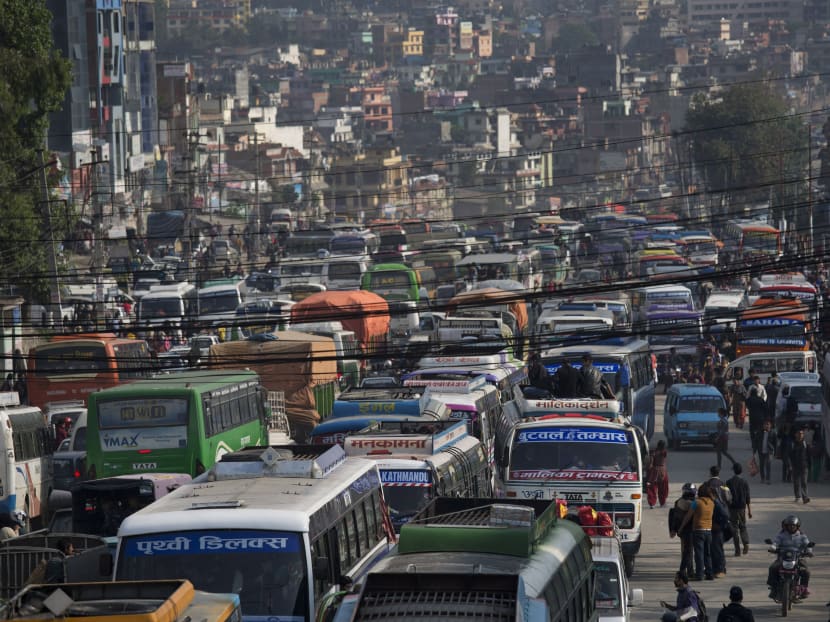Nepal shuts down its only international airport to big jets
KATHMANDU — Despite dire need by millions, earthquake-hit Nepal on Sunday was forced to close its only international airport to big airplanes flying in relief supplies and aid workers because the only runway can’t handle the strain of the stream of large aircraft flying in to help.


KATHMANDU — Despite dire need by millions, earthquake-hit Nepal on Sunday was forced to close its only international airport to big airplanes flying in relief supplies and aid workers because the only runway can’t handle the strain of the stream of large aircraft flying in to help.
Medium and small-size jets will still be allowed to land, officials said.
It is only the latest complication in global efforts to aid people suffering in the wake of the April 25 quake, the impoverished country’s biggest and most destructive in eight decades.
People in Nepal — both in remote villages and the capital, Kathmandu — have complained about not seeing any rescue workers or international aid and about a lack of temporary shelters, with many sleeping out in the open because of fears of aftershocks bringing down their damaged homes.
Mr Birendra Shrestha, the manager of Tribhuwan International Airport, located on the outskirts of Kathmandu, said bigger planes were banned because the runway was deteriorating. The runway was built to handle only medium-size jetliners and not the large military and cargo planes that have been flying to the airport since the magnitude-7.8 earthquake struck, he said.
The last week has seen a steady procession of big jets trying to fly in goods and relief workers, as well as a swarm of journalists, but the small airport has parking slots for only nine jets and only one runway.
There have been reports of cracks on the runway and other problems at the only international airport in Nepal and the only one capable of handling jetliners.
One week after the quake, aid has been slow in reaching those who need it most. In many places, it has not come at all.
UN humanitarian officials said yesterday (May 2) that they were increasingly worried about the spread of disease. They said more helicopters were needed to reach isolated mountain villages that were hard to access even before the quake.
The true extent of the damage from the earthquake is still unknown as reports keep filtering in from remote areas, some of which remain entirely cut off. The UN says the quake affected 8.1 million people — more than a quarter of Nepal’s 28 million people.
The government said today that the quake had killed 7,040 people. Mr Laxi Dhakal, a Home Ministry official, said hopes of finding survivors had faded dramatically. “Unless they were caught in an air pocket, there is not much possibility,” he said.
Nepal has been shaken by more than 70 aftershocks following the quake, and its people remain on edge. One brief aftershock yesterday afternoon shook the only paved road in the village of Pauwathok. Residents screamed and began to run, then stopped when the tremor eased.
The small village is located in the district of Sindupalchok, where more deaths have been recorded than anywhere else in Nepal — 2,560, compared to 1,622 in Kathmandu. The UN says up to 90 per cent of the houses in Sindupalchok have been destroyed. AP






